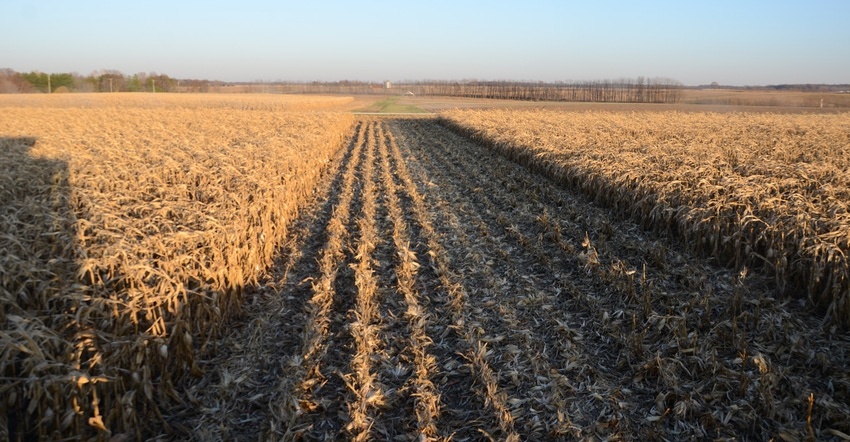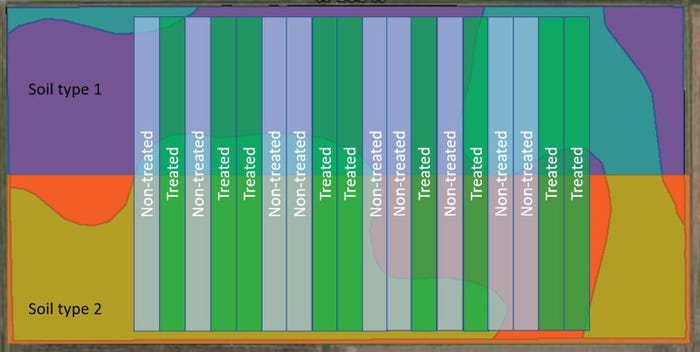December 6, 2022

Why should you have confidence in data from university trials? Here is a brief look at what goes into making up these trials, either at Purdue ag centers or on farms. If you understand why and how researchers do things, perhaps the results will be more meaningful.
Researchers approach testing a treatment, such as a new product or a practice, within a field using randomization, replication and statistics. Replication is simply repeating an experiment in similar conditions. You can get a taste of statistics in the table later in the article.
Related: How to determine if a crop product truly works
The graphic below highlights how a research trial is typically set up, using replication and randomization of treated and non-treated passes to account for field differences. Note that there are two different soil types in the field. If you simply split the field in half or quarters, some treatments would be on better soils in more cases than others.

Replication and randomization help improve reliability of conclusions, account for random errors such as field variability, and determine the true causes of yield differences. It’s important to perform these trials across multiple locations and multiple years to determine how treatment responses may vary in different fields and environments.
Statistical models help determine if differences are due to random error or the treatment. If you’ve seen university data presented, you’ve seen it presented like it is in the table below. At first glance, after the treatments were randomized and replicated, the treated areas seem to have increased corn yield 4 bushels per acre.

However, the conclusion of the study was that no yield differences were observed. How did researchers reach that conclusion? Through research steps implemented, it was determined yield difference was due to random error, like field variability, and not the product or management practice tested. The letters next to yield values help highlight where statistical differences were observed. Since the letters are the same, yields were statistically the same — within the margin of error. If differences were real, letters would be different.
Take-home message
When testing a new product or practice on your farm, think about how to design and set up a trial to accurately test the product or practice. Just because a yield difference is observed doesn’t always mean the product or practice tested caused this difference.
At Purdue, the goal is accurately assessing new products and practices to determine whether these are truly the reason behind observed yield differences. As you sit in various meetings and examine research results, ask yourself: How did they design and set up this research trial?
Did they use randomization, replication and statistics? If not, are the yield differences being discussed truly due to the product applied? In how many different environments and years was this product tested? Asking these questions can help determine the best products and management practices to implement and improve your operation.
Could working with Purdue University to perform on-farm research help improve the university’s recommendations, your operation and your understanding of data collected? If you think it could, please reach out to Dan Quinn at [email protected].
Quinn is a Purdue Extension corn specialist.
You May Also Like




